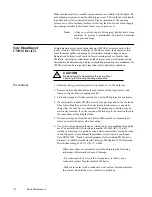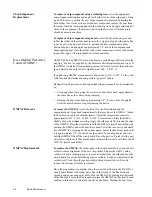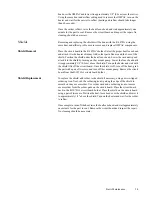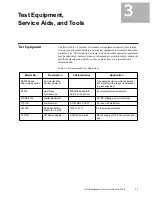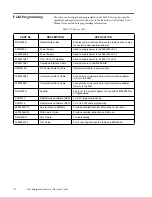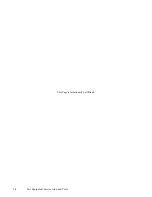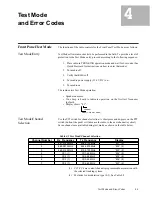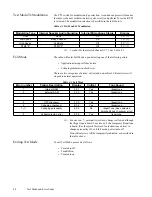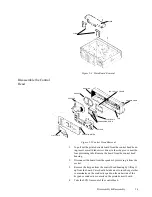
Basic Maintenance
2-3
7. Always wear a conductive strip when servicing this equipment. the Motorola
part number for a replacement wrist strap that connects to the table mat is 42-
80385A59.
8. When straightening CMOS pins, provide ground straps for apparatus used.
9. When soldering, use a grounded soldering iron.
Repair Procedures and
Techniques
The radio support center is at the following address:
Motorola Radio Support Center
3651 South Central Avenue
Rockford, Ill, 61102
Telephone: (800) 227-6772
(815) 874-1400
Refer to the Disassembly and Reassembly section of the manual for pertinent
information prior to replacing and substituting parts.
Parts Replacement
Special care should be taken to be as certain as possible that a suspected
component is actually the one at fault. This special care will eliminate unnecessary
unsoldering and removal of parts, which could damage or weaken other
components or the printed circuit board itself.
When damaged parts are replaced, identical parts should be used. If the identical
replacement component is not locally available, check the parts list for the proper
Motorola part number and order the component from the nearest Motorola
Communications Parts office.
Rigid Circuit Boards
This family of radios uses bonded, multi-layer, printed circuit boards.
Since the inner layers are not accessible, some special considerations are
required when soldering and unsoldering components. The printed-
through holes may interconnect multiple layers of the printed circuit.
When soldering near the 16 or 18-pin connector, use care to avoid
accidentally getting solder in the connector.
Chip Components
Use either the RLN4062 Hot-Air Repair Station or the Motorola 0180381B45
Repair Station for chip component replacement. When using the 0180381B45
Repair Station, select the TJ-65 mini-thermojet hand piece. On either unit, adjust
the temperature control to 700˚ F (370˚ C), and adjust the airflow to a minimum
setting. Airflow can vary due to component density.
Chip Component Removal
To remove a chip component, select a hot-air hand piece and position the nozzle
of the hand piece approximately 1/8” above the component to be removed. Begin
applying the hot air. Once the solder reflows, remove the component using a pair
of tweezers. Using solder wick and a soldering iron or a power desoldering station,
remove the excess solder from the pads.
CAUTION
Therefore, care should be exercised to avoid pulling the
plated circuit out of the hole.
CAUTION
Be careful not to form solder bridges between the
connector pins. Closely examine your work for shorts due
to solder bridges.
!
!














